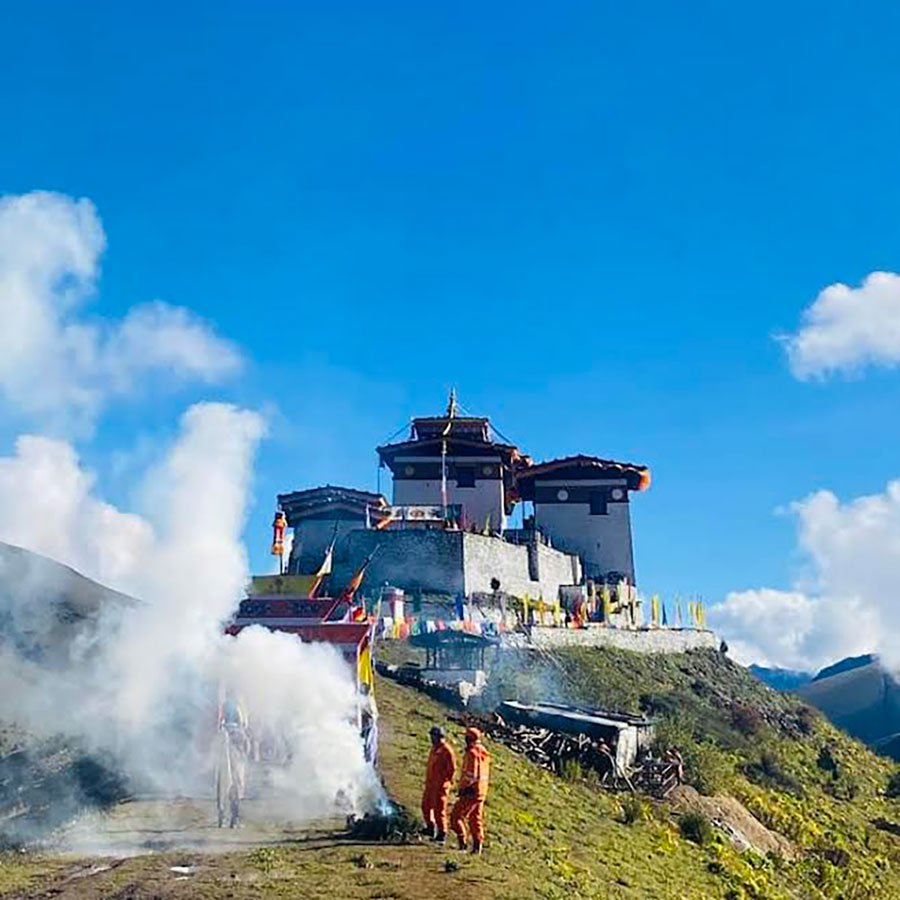Thinley Namgay
The historic Lingzhi Yugyal Dzong—one of the key fortresses along Bhutan’s northern frontier—which was severely damaged by the 2011 earthquake has been restored to its former glory.
With the completion of the reconstruction work, the Dorji Lopen of Zhung Dratshang recently consecrated the Dzong.
The reconstruction took nearly seven years.

More than 100 open-air prisoners worked for the reconstruction project
Originally built between 1667 and 1680 during the reign of the third Druk Desi, Chogyal Minjur Tenpa, Lingzhi Yugyal Dzong commemorates Bhutan’s victory over Tibetan invasions, earning its name Yugyal Dzong.
The dzong was first destroyed by an earthquake in 1897. It was rebuilt in the 1950s and partly renovated in 2005.
For centuries, the Dzong has served as both an administrative and religious centre, symbolising Bhutanese resilience against external threats while showcasing the country’s unique architectural heritage.
Located in the northern frontier, the dzong has played a pivotal role in defending Bhutan’s borders and upholding regional security, representing peace, stability, and sovereignty.
The reconstruction project, funded by the Government of India in the 12th Plan with a budget of Nu 400 million, began in 2018. However, only about Nu 180 million has been utilised to date.
The project was spearheaded by the Department of Culture and Dzongkha Development and implemented by Thimphu Dzongkhag Administration.
One of the most notable aspects of this project is that all the workers involved were open-air prisoners. More than 100 individuals worked for nearly seven years at an altitude of 4,150 metres in the reconstruction of the dzong.
Lingzhi Drungpa Mani Sangay, the project coordinator, said that numerous challenges were faced during the reconstruction. “In harsh weather conditions, workers had to gather timber from locations that required a two-day walk, and collecting stones was similarly arduous,” he said. “Rations had to be transported from Barshong, which is a three-day walk from Lingzhi.”
Lingzhi Gup Wangdi said, “The people of Lingzhi are extremely happy. This dzong is a crucial place for highlanders to pray and receive blessings. It can now safely shelter important monuments.”
Among the dzong’s main relics are the Zhabdrung’s chag roel (cymbal) and a silver-carved, gold-plated saddle used by Zhabdrung when he arrived in Bhutan on horseback. Other significant Ku Ten Sung Ten housed within the dzong include statues of Shakya Thupa, Chenrezig, Phajo Drugom Zhigpo, Guru Pema Jungney, and Gonpo Tsepagme, along with the revered Bum Sey Dem (gold script).


